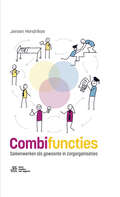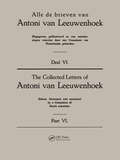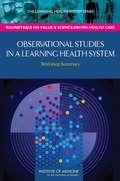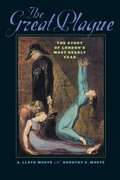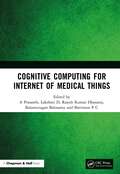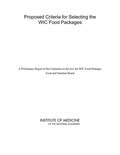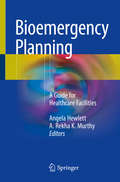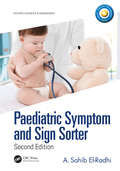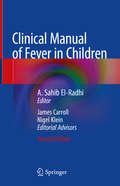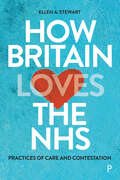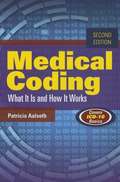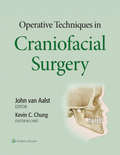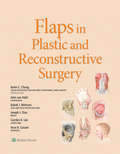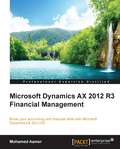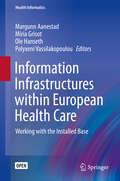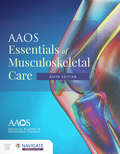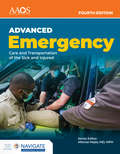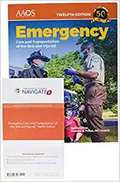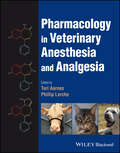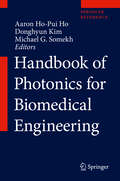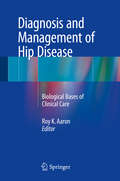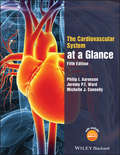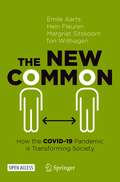- Table View
- List View
統合失調症を乗り越えて: 私の妄想型統合失調症、強迫性障害、鬱病、病態失認、自殺願望及び重度の精神障害の治療と回復の経験
by リチャード・カールソン・ジュニアリチャード・カールソン・ジュニアは21歳の時に妄想型統合失調症と診断される。発症したのは幼少期。10年以上もの間、近代精神医学はリチャードに適切なケアを与えることはなかった。警察沙汰をキッカケにリチャードは初めて自分の診断を受け入れるようになり、回復への長い道のりを歩きだす。以降、10年以上治療を続けた結果人生が大幅に改善され、統合失調症に加え、倦怠感、鬱病、強迫性障害からも回復することとなる。
Combifuncties: Samenwerken als gewoonte in zorgorganisaties
byDe zorg heeft te maken met een fundamenteel personeelstekort. Een uitdaging waar Combifuncties een bewezen oplossing voor biedt. Maak gebruik van de kracht van combifuncties voor meer motivatie en werkplezier!In een combifunctie bekleedt een medewerker twee verschillende functies in twee teams, afdelingen of zelfs organisaties. Bijvoorbeeld een leidinggevende die ook patiëntenzorg verleent of een verpleegkundige die ook kwaliteitsmedewerker is.In dit boek laat Jeroen Hendrikse zien hoe je krachtige zorgorganisaties krijgt waarin zowel de patiënt als de medewerker zich gehoord, gezien en gesteund voelt. Hij biedt handvatten om aan de slag te gaan en geeft veel voorbeelden uit de zorgpraktijk.---“De aankomende jaren zal het blijven borgen van toegankelijke zorg onze grootste opgave zijn. Jeroen Hendrikse diept in zijn nieuwe boek een belangrijke oplossing uit: de synergie van combifuncties.”Prof. dr. Maurice van den Bosch, interventieradioloog; voorzitter raad van bestuur, Onze Lieve Vrouwe Gasthuis (OLVG); voorzitter, Santeon ---“Dit boek komt precies op tijd! We staan immers op een kruispunt in de zorg. Jeroen Hendrikse brengt vanuit zijn ervaring in de zorg en het leidinggevende kader een verhelderend en inspirerend perspectief op combifuncties. Niet alleen meeslepend en beeldend, maar ook praktisch ingestoken met een goed ontwikkeld stappenplan.”Prof. dr. Jim van Os, hoogleraar psychiatrie; voorzitter Divisie Hersenen, UMC Utrecht---“Combifuncties maken voor veel professionals de zorg weer de leukste plek om te werken.”Prof. dr. Marieke Schuurmans, hoogleraar verplegingswetenschap; Chief Healthcare Organization, Nederlandse Zorgautoriteit (NZa)
Collected Letters Van Leeuwenhoek, Volume 6
by A Commission of Dutch scientists.This 6th volume in a 19-volume series contains 21 letters written by van Leeuwenhoek of the perod 1686-87. The contents of the letters published here, again show the great range of subjects that occupied Van Leeuwenhoek: from sugar candy, the shape and crystal structure of diamonds, the dissolution of silver crystals in aqua fortis to gold dust from Guinea dissolved in aqua regia and the dissolution and separation of gold, silver, and copper. Every volume in the Series contains the texts in the original Dutch and an English translation. The great range of subjects studied by Van Leeuwenhoek is reflected in these letters: instruments to measure water, pulmonary diseases; experiments relating to the solution of gold and silver; salt crystals and grains of sand; botanical work, such as duckweed and germination of orange pips; description on protozoa. blood, spermatozoa and health and hygiene, for example and harmfulness of tea and coffee and the benefits of cleaning teeth.
Observational Studies in a Learning Health System
by A Learning Health System Activity Claudia Grossmann Joe Alper Roundtable on Value and Science-Driven Health Care Institute of MedicineClinical research strains to keep up with the rapid and iterative evolution of medical interventions, clinical practice innovation, and the increasing demand for information on the clinical effectiveness of these advancements. In response to the growing availability of archived and real-time digital health data and the opportunities this data provides for research, as well as the increasing number of studies using prospectively collected clinical data, the Institute of Medicine\'s Roundtable on Value & Science-Driven Health Care convened a workshop on Observational Studies in a Learning Health System. Participants, including experts from a wide range of disciplines - clinical researchers, statisticians, biostatisticians, epidemiologists, health care informaticians, health care analytics, research funders, health products industry, clinicians, payers, and regulators - explored leading edge approaches to observational studies, charted a course for the use of the growing health data utility, and identified opportunities to advance progress. Workshop speakers and individual participants strove to identify stakeholder needs and barriers to the broader application of observational studies. Observational Studies in a Learning Health Systemis the summary of the workshop. This report explores the role of observational studies in the generation of evidence to guide clinical and health policy decisions. The report discusses concepts of rigorous observational study design and analysis, emerging statistical methods, and opportunities and challenges of observational studies to complement evidence from experimental methods, treatment heterogeneity, and effectiveness estimates tailored toward individual patients.
The Great Plague: The Story of London's Most Deadly Year
by A. Lloyd Moote Dorothy C. MooteUnderscoring the human dimensions of the epidemic, historian A. Lloyd Moote and microbiologist Dorothy C. Moote provide an engrossing and deeply informed account of 1665, a cataclysmic plague year in London.
Criminal Law, Philosophy and Public Health Practice
by A. M. Viens John Coggon Anthony S. Kessel A. M. Viens John CoggonThe goal of improving public health involves the use of different tools, with the law being one way to influence the activities of institutions and individuals. Of the regulatory mechanisms afforded by law to achieve this end, criminal law remains a perennial mechanism to delimit the scope of individual and group conduct. Utilising criminal law may promote or hinder public health goals, and its use raises a number of complex questions that merit exploration. This examination of the interface between criminal law and public health brings together international experts from a variety of disciplines, including law, criminology, public health, philosophy and health policy, in order to examine the theoretical and practical implications of using criminal law to improve public health.
Cognitive Computing for Internet of Medical Things
by A. Prasanth, D. Lakshmi, Rajesh Kumar Dhanaraj, Balamurugan Balusamy, P.C. SherimonCognitive Computing for Internet of Medical Things (IoMT) offers a complete assessment of the present scenario, role, challenges, technologies, and impact of IoMT-enabled smart healthcare systems. It contains chapters discussing various biomedical applications under the umbrella of the IoMT. Key Features Exploits the different prospects of cognitive computing techniques for the IoMT and smart healthcare applications Addresses the significance of IoMT and cognitive computing in the evolution of intelligent medical systems for biomedical applications Describes the different computing techniques of cognitive intelligent systems from a practical point of view: solving common life problems Explores the technologies and tools to utilize IoMT for the transformation and growth of healthcare systems Focuses on the economic, social, and environmental impact of IoMT-enabled smart healthcare systems This book is primarily aimed at graduates, researchers and academicians working in the area of development of the application of the of the application of the IoT in smart healthcare. Industry professionals will also find this book helpful.
Proposed Criteria for Selecting the WIC Food Packages
by A Preliminary Report of the Committee to Review the WIC Food PackagesThe National Academies Press (NAP)--publisher for the National Academies--publishes more than 200 books a year offering the most authoritative views, definitive information, and groundbreaking recommendations on a wide range of topics in science, engineering, and health. Our books are unique in that they are authored by the nation's leading experts in every scientific field.
Bioemergency Planning: A Guide for Healthcare Facilities
by A. Rekha K. Murthy Angela HewlettThis text gathers the weaknesses revealed during recent infections outbreaks and organizes them into a guide for combating the trends in emerging infections as they relate to hospital preparedness. As the first book to exclusively explore infectious emergencies, the text begins by reviewing potential pathogens and the clinical issues that may threaten hospital safety before delving into the best operational guidelines for commanding a staff under extreme circumstances, including incident command, communication, transport, maintenance, and a myriad of other topics that can remain manageable with proper protocol. Written by experts in the field, this text is the only one that offers the most effective clinical responses to a crisis at every level of care, including special population, laboratory techniques, care of the deceased, behavioral support, and medical documentation. The text concludes by focusing on the reality of care by introducing true examples from the field and the lessons gained from these cases.Bioemergency Planning is a vital resource for infectious disease specialists, hospitalists, epidemiologists, internal medicine physicians, nurses, social workers, public health officials, and all medical professionals who need to be prepared to respond to an infection outbreak.
Paediatric Symptom and Sign Sorter: Second Edition (Pediatric Diagnosis and Management)
by A. Sahib El-RadhiThis book will be a vital tool for all clinicians in the front line when an ill child presents with an acute illness. Experienced paediatricians, postgraduate doctors, primary care physicians, and paediatric nurses will find this a useful refresher, and it will be an invaluable primer for newly trained doctors and students, or those new to the paediatric wards. <P><P>Each chapter here provides an overview of each symptom and sign followed by the most likely underlying causes in an easy-to-use tabular format. Investigative techniques and guidelines follow, ranging from the simple and inexpensive to the more complex, as do Top Tips and Red Flag warnings to note; new to this second edition are concluding summaries of Key Points, as well as an entirely new Endocrine chapter.
Clinical Manual of Fever in Children
by A. Sahib El-Radhi James Carroll Nigel KleinThis book discusses the latest scientific evidence related to fever and presents the principles of clinical practice, covering different types of fever and its possible complications. The book adopts a clearly defined, practical and effective approach to the management of fever, helping the clinician improve the care for the febrile child. The reader will learn about the guidelines on antipyretics and their side-effects and differential diagnoses, with problem-setting and solving as a case presentation.The second edition of this well-received book has been fully updated to include exciting new information of the pathogenesis of fever, including functions of interleukin and all the latest guidelines from NICE and Cochrane Library, as well as all the most up-to-date information and guidelines on febrile seizures.This reader-friendly reference on the disorders of body temperature in children covers the entire spectrum of subjects related to fever. It gives an overview of the best treatment options in order to achieve the best results. Containing a core message at the start of each chapter and with and a reader-friendly format this is an indispensable guide for paediatricians, family doctors and other professionals who are regularly consulted because of febrile children.
How Britain Loves the NHS: Practices of Care and Contestation
by Ellen A. StewartEPDF and EPUB available Open Access under CC-BY-NC-ND licence. What does it mean to love a healthcare system? It is often claimed that the UK population is unusually attached to its National Health Service, and the last decade has seen increasingly visible displays of gratitude and love. While social surveys of public attitudes measure how much Britain loves the NHS, this book mobilises new empirical research to ask how Britain loves its NHS. The answer delves into a series of public practices – such as campaigning, donating and volunteering within NHS organisations – and investigates how attitudes to the NHS shape patient experience of healthcare. Stewart argues that these should be understood as practices of care for, and contestation about the future of, the healthcare system. This book offers a timely critique of both the potential, and the dysfunctions, of Britain’s complex love affair with the NHS.
Medical Coding: What It Is and How It Works (Second Edition)
by Patricia T. AalsethIn clear and straightforward language, Medical Coding: What It Is and How It Works, Second Edition provides an overview of the evolution of medical coding and all the various coding systems, how they relate, and how they function. Reasoning and consequences of the delayed ICD-10 implementation are explained along with a sound overview of the ICD-10-CM and PCS classification systems. For those contemplating a career in the coding field, this book is ideal as a basic orientation. Other individuals in healthcare management and administration will also benefit from a basic understanding of how coding works. Unlike other publications that focus only on coding, this book integrates coding guidelines and principles into the billing and reimbursement process, giving the student a more practical foundation in the rationale for correct coding. Healthcare fraud and abuse is addressed as well, to assure that readers understand ethical concerns inherent in coding for reimbursement. Instructor Resources: Instructor's Manual, PowerPoint slides, Test Bank
Operative Techniques in Craniofacial Surgery
by John Van AalstPart of the best-selling Operative Techniques series, Operative Techniques in Plastic Surgery provides superbly illustrated, authoritative guidance on operative techniques along with a thorough understanding of how to select the best procedure, how to avoid complications and what outcomes to expect. This stand-alone book offers focused, easy-to-follow coverage of injuries and diseases afflicting the craniofacial region, all taken directly from the larger text. It covers nearly all plastic surgery operations for this area that are in current use, and is ideal for residents and physicians in daily practice.
Flaps in Plastic and Reconstructive Surgery
by John Van Aalst Babak Mehrara Joseph DisaPart of the best-selling Operative Techniques series, Operative Techniques in Plastic Surgery provides superbly illustrated, authoritative guidance on operative techniques along with a thorough understanding of how to select the best procedure, how to avoid complications and what outcomes to expect. This stand-alone book offers focused, easy-to-follow coverage of flaps for all anatomic regions, taken directly from the larger text. It covers nearly all flap techniques hat are in current use, and is ideal for residents and physicians in daily practice.
Microsoft Dynamics AX 2012 R3 Financial Management
by Mohamed AamerThis book is intended for application consultants, controllers, CFOs, and other professionals who are engaged in a Microsoft Dynamics AX implementation project. Basic knowledge of financial terms, concepts, and Microsoft Dynamics AX terminologies is required.
Information Infrastructures within European Health Care
by Margunn Aanestad Miria Grisot Ole Hanseth Polyxeni VassilakopoulouThis book is open access under a CC BY-NC 2. 5 license. The book aims to be a resource for those interested in planning and implementing large-scale information infrastructures for novel electronic services in health care. The focus of this book is on the pivotal role of the installed base (i. e. the already existing elements of an infrastructure) for ensuing infrastructural development. The book presents rich empirical cases on the design, development and implementation of core infrastructural components (e-prescription and public patient-oriented web platforms) in different national settings across Europe. Therefore, this is a book in which theoretical insights and practical experiences are tightly connected. Contributions have been sourced from a network of academics that have been working on the topic for years, and who have previously collaborated and shared a common understanding of the challenges entailed in expanding information infrastructures within healthcare. The book aims to become a reference for those seeking theoretical and empirical insights for conceptualizing and steering the evolution of information infrastructures in healthcare. The two types of systems (e-prescription and public patient-oriented web platforms) have been selected because they are widespread across Europe, because they invite comparisons, and because they are exemplary of two different types of aims. E-prescription initiatives are usually seen as opportunities to improve healthcare delivery by systematic and not dramatic change. Public patient-oriented web platforms are seen as opportunities to pursue wider and more radical innovation. This book targets researchers, practitioners and students who would benefit from a book providing a comprehensive view to contemporary approaches for the design and deployment of large-scale, inter-organizational systems within healthcare. This book is open access under a CC BY 4. 0 license.
AAOS Essentials of Musculoskeletal Care
by AAOSEssentials of Musculoskeletal Care, Enhanced Fifth Edition is a robust educational resource focused on how to evaluate and manage common musculoskeletal conditions.
AEMT: Advanced Emergency Care and Transportation of the Sick and Injured Advantage Package
by AAOSThe all-new Fourth Edition of Advanced Emergency Care and Transportation of the Sick and Injured combines comprehensive content with an unparalleled suite of digital resources to fully empower AEMT students and educators.
Emergency Care And Transportation Of The Sick And Injured Essentials Package
by AaosAbout Emergency Care and Transportation of the Sick and Injured, Twelfth Edition: Since 1971, Emergency Care and Transportation of the Sick and Injured has advanced how EMS education is delivered to help train exceptional EMS professionals around the globe. Fifty years later, the Twelfth Edition is now the most advanced EMT teaching and learning system ever developed. Current State-of-the-Art Medical Content Comprehensive coverage of the National EMS Education Standards and the 2020 American Heart Association (AHA) Guidelines for Cardiopulmonary Resuscitation and Emergency Cardiovascular Care (ECC). Evidence-based medical concepts are incorporated to ensure that students and instructors have accurate, insightful interpretation of medical science as it applies to prehospital medicine today. Updated coverage of PPE and CDC guidelines for safe patient care during COVID-19 pandemic. A Focus on Career Readiness and Employability Greater emphasis on soft skill development, including empathy, teamwork, interpersonal skills, and problem solving, and how critical these skills are for better patient outcomes. Enhanced content on provider mental health, wellness, and safety. Evolving patient case studies that deliver clinical education and help prepare students to care for patients in the field. The cases offer increased focus on EMS provider leadership and critical thinking skills throughout the text. A new “Street Smarts” feature that helps bridge the gap between the classroom and field environment by addressing nontechnical skills that improve patient and co-worker interactions. A Foundation for Success The textbook design and layout have been revised to improve visualization of key content and overall readability. Comprehensive anatomy, physiology, pathophysiology, and medical terminology content is delivered in early chapters, and subsequently reinforced in related chapters throughout the textbook. Valuable student resources, including audiobook, interactive lectures, test prep, soft-skill simulations, and videos cater to a variety of learning styles and needs. Educators are supported by a broad range of instructional and assessment resources to fully enable traditional, hybrid, and flipped course delivery.
Pharmacology in Veterinary Anesthesia and Analgesia
by Turi Aarnes Phillip LerchePharmacology in Veterinary Anesthesia and Analgesia A concise yet comprehensive and usable pharmacological resource for veterinary practitioners In Pharmacology in Veterinary Anesthesia and Analgesia, a team of distinguished veterinary practitioners delivers a singular and comprehensive text dedicated to anesthetic drug pharmacology and drug interactions related specifically to anesthetic drugs in a veterinary setting. This concise, easily navigable reference combines information scattered throughout the academic literature and covers mechanisms of action of commonly used drugs in commonly encountered species, drug interactions, and clinical uses of anesthetic drugs. The volume explores drug metabolism, the effects of various drugs on organ systems, risks of adverse effects, as well as the impact of anesthesia on drugs, and the effects of drugs on anesthesia. Readers will also find: A thorough introduction to pharmacokinetics, pharmacodynamics, and pharmacogenomics in veterinary anesthesia Comprehensive explorations of veterinary regulatory concerns associated with anesthesia and analgesia for food animals Practical discussions of alpha-2 agonists and antagonists, phenothiazines, butyrophenones, benzodiazepines, and opioid agonists and antagonists Fulsome treatments of local anesthetics, non-steroidal anti-inflammatory drugs, inhalants, and induction drugs Perfect for veterinary anesthesiologists and criticalists, internists, and surgeons, Pharmacology in Veterinary Anesthesia and Analgesia will also earn a place in the libraries of private practitioners and veterinary technicians performing anesthesia as well as researchers using veterinary species as a model.
Handbook of Photonics for Biomedical Engineering
by Aaron Ho-Pui Ho Donghyun Kim Michael G. SomekhNanophotonics has emerged rapidly into technological mainstream with the advent and maturity of nanotechnology available in photonics and enabled many new exciting applications in the area of biomedical science and engineering that were unimagined even a few years ago with conventional photonic engineering techniques. Handbook of Nanophotonics in Biomedical Engineering is intended to be a reliable resource to a wealth of information on nanophotonics that can inspire readers by detailing emerging and established possibilities of nanophotonics in biomedical science and engineering applications. This comprehensive reference presents not only the basics of nanophotonics but also explores recent experimental and clinical methods used in biomedical and bioengineering research. Each peer-reviewed chapter of this book discusses fundamental aspects and materials/fabrication issues of nanophotonics, as well as applications in interfaces, cell, tissue, animal studies, and clinical engineering. The organization provides quick access to current issues and trends of nanophotonic applications in biomedical engineering. All students and professionals in applied sciences, materials, biomedical engineering, and medical and healthcare industry will find this essential reference book highly useful.
Diagnosis and Management of Hip Disease
by Roy K. AaronPresenting recent advances in clinical diagnosis and treatment derived from an increased understanding of the biology of the hip, this unique text examines hip disease and pathophysiology through the lenses of kinematics, biomechanics, anatomy and metabolism. Opening chapters examine the impact of health care organization on hip care and prevalence and burden of osteoarthritis. Biomechanical considerations of the hip and gait pathomechanics in hip disease are then discussed, followed by chapters covering femoroacetabular impingement, possible links between OA and metabolic syndrome, osteonecrosis, osteoporosis and Paget's disease. Considerations of risk reduction surrounding hip arthroplasty conclude the text, including device and surgical options for THA, hip sepsis and prevention of perioperative infection, and management of venous thromboembolism. Taken together, this represents a new and important context for the discussions and management of hip disease for orthopedic surgeons and researchers alike.
The Cardiovascular System at a Glance (At a Glance)
by Philip I. Aaronson Jeremy P. Ward Michelle J. ConnollyEverything you need to know about the cardiovascular system... at a Glance! The Cardiovascular System at a Glance is the essential reference guide to understanding all things circulatory. Concise, accessible, and highly illustrated, this latest edition presents an integrated overview of the subject, from the basics through to application. Featuring brand new content on stroke, examination and imaging, heart block and ECGs, and myopathies and channelopathies, The Cardiovascular System at a Glance goes one step further and offers new and updated clinical case studies and multiple-choice questions on a supplementary website. Integrates basic science and clinical topics Offers bite-size chapters that make topics easy to digest Includes coverage of anatomy and histology, blood and haemostasis, cellular physiology, form and function, regulation and integration of cardiovascular function, history, examination and investigations, pathology and therapeutics Filled with highly visual, colour illustrations that enhance the text and help reinforce learning The fifth edition of The Cardiovascular System at a Glance is an ideal resource for medical students, junior doctors, students of other health professions, and specialist cardiology nurses.
The New Common: How the COVID-19 Pandemic is Transforming Society
by Emile Aarts Hein Fleuren Margriet Sitskoorn Ton WilthagenThis open access book presents the scientific views of some fifty experts on how they believe the COVID-19 pandemic is currently affecting society, and how it will continue to do so in the years to come. Using the concept of a “common” (in the sense of common values, common places, common goods, and common sense), they elaborate on the transition from an Old Common to a New Common. In carefully crafted chapters, the authors address expected shifts in major fields like health, education, finance, business, work, and citizenship, applying concepts from law, psychology, economics, sociology, religious studies, and computer science to do so. Many of the authors anticipate an acceleration of the digital transformation in the forthcoming years, but at the same time, they argue that a successful shift to a new common can only be achieved by re-evaluating life on our planet, strengthening resilience at an individual level, and assuming more responsibility at a societal level.

